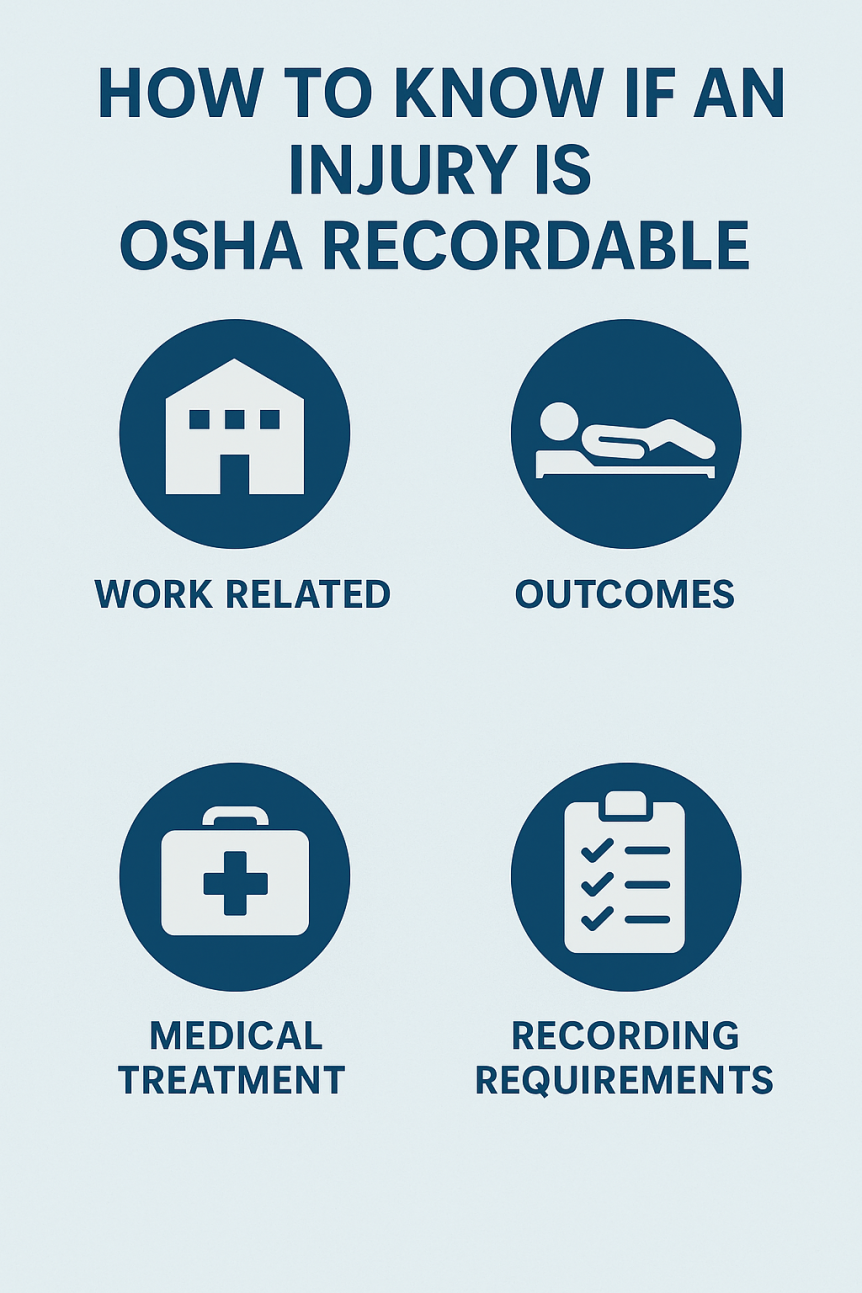Understanding OSHA recordability is key for workplace safety compliance. Not every incident at work needs to go on your OSHA log, but failing to recognize a recordable injury can lead to fines and compliance issues. Here’s a clear guide to help you determine whether an injury or illness must be recorded.
The Basics: What Makes an Injury Recordable?
An injury or illness is considered OSHA recordable if it is work-related and results in any of the following outcomes:
- Death
- Days away from work
- Restricted work or job transfer
- Medical treatment beyond first aid
- Loss of consciousness
- A significant injury or illness diagnosed by a healthcare professional (e.g., cancer, fractured ribs, punctured eardrum)
Work-Relatedness Matters
The injury or illness must be related to the work environment. That means it was caused or contributed to by a workplace event, exposure, or condition. Some exceptions exist, such as:
- Injuries from voluntary wellness or fitness activities
- Conditions caused solely by non-work-related factors
- Symptoms appearing at work but not caused by it
First Aid vs. Medical Treatment
OSHA provides a specific definition of first aid. Examples of first aid include:
- Cleaning, flushing, or soaking wounds
- Using bandages or wraps
- Tetanus shots
- Hot or cold therapy
- Nonprescription medications at nonprescription strength
Anything beyond these counts as medical treatment, which makes the case recordable. Examples include:
- Stitches
- Prescription medication
- Physical therapy
- Casts or splints
Recording and Reporting Requirements
If an injury is recordable, it must be logged on the OSHA 300 Log. Some serious cases also require direct reporting to OSHA:
- Fatalities: within 8 hours
- In-patient hospitalizations, amputations, or eye losses: within 24 hours
Quick Example
- A worker cuts their hand and only needs a bandage → Not recordable (first aid).
- The same worker needs stitches → Recordable (medical treatment beyond first aid).
Wrapping Up
The key question is: did the incident involve work-relatedness and does it go beyond first aid? If yes, it belongs on your OSHA log. Being consistent in how you evaluate cases not only ensures compliance but also protects your organization and employees.
Pro Tip
Use an OSHA record keeping software to streamline compliance, save time, and reduce the risk of costly reporting mistakes.

